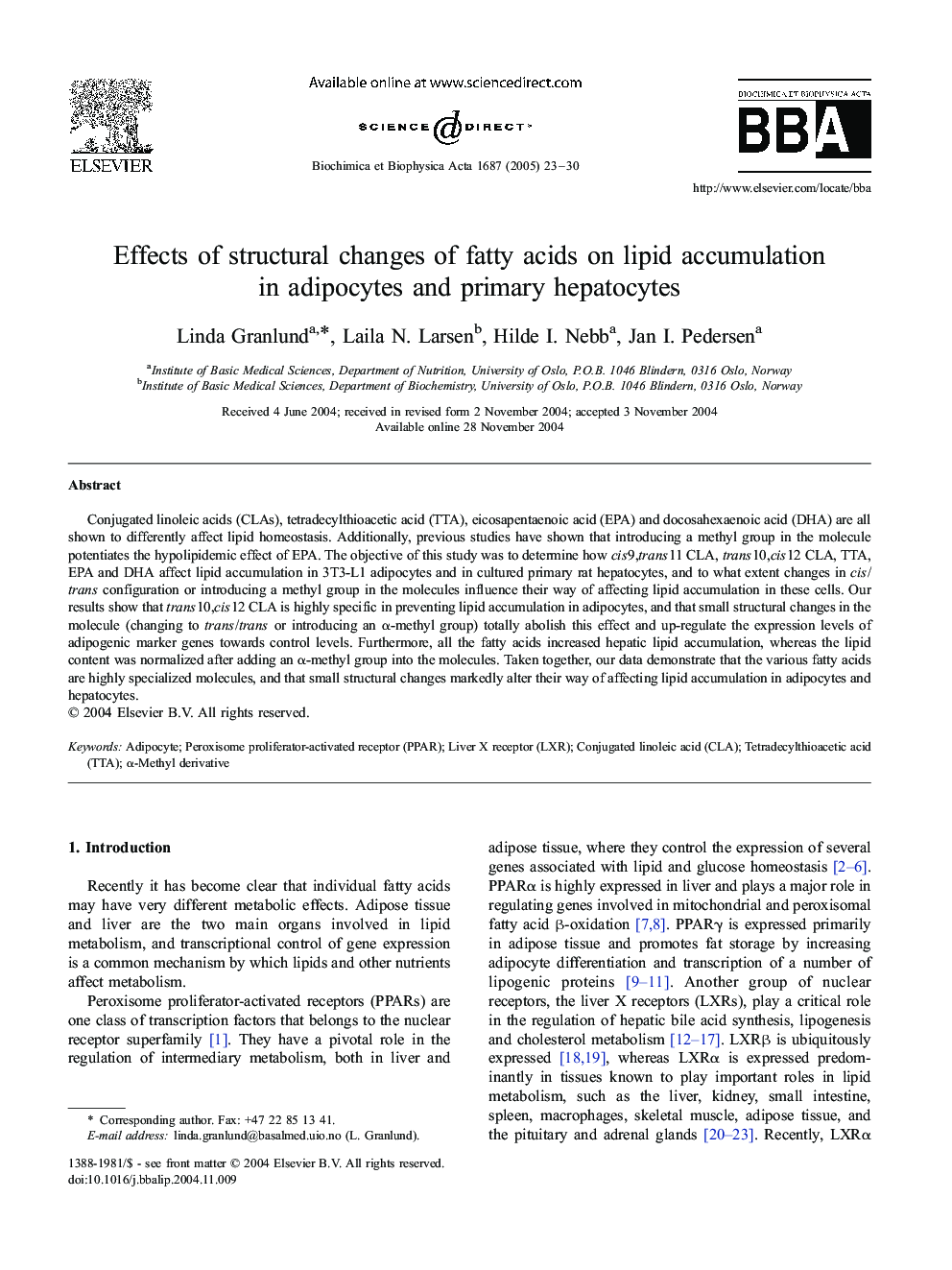| Article ID | Journal | Published Year | Pages | File Type |
|---|---|---|---|---|
| 9886611 | Biochimica et Biophysica Acta (BBA) - Molecular and Cell Biology of Lipids | 2005 | 8 Pages |
Abstract
Conjugated linoleic acids (CLAs), tetradecylthioacetic acid (TTA), eicosapentaenoic acid (EPA) and docosahexaenoic acid (DHA) are all shown to differently affect lipid homeostasis. Additionally, previous studies have shown that introducing a methyl group in the molecule potentiates the hypolipidemic effect of EPA. The objective of this study was to determine how cis9,trans11 CLA, trans10,cis12 CLA, TTA, EPA and DHA affect lipid accumulation in 3T3-L1 adipocytes and in cultured primary rat hepatocytes, and to what extent changes in cis/trans configuration or introducing a methyl group in the molecules influence their way of affecting lipid accumulation in these cells. Our results show that trans10,cis12 CLA is highly specific in preventing lipid accumulation in adipocytes, and that small structural changes in the molecule (changing to trans/trans or introducing an α-methyl group) totally abolish this effect and up-regulate the expression levels of adipogenic marker genes towards control levels. Furthermore, all the fatty acids increased hepatic lipid accumulation, whereas the lipid content was normalized after adding an α-methyl group into the molecules. Taken together, our data demonstrate that the various fatty acids are highly specialized molecules, and that small structural changes markedly alter their way of affecting lipid accumulation in adipocytes and hepatocytes.
Keywords
Related Topics
Life Sciences
Biochemistry, Genetics and Molecular Biology
Biochemistry
Authors
Linda Granlund, Laila N. Larsen, Hilde I. Nebb, Jan I. Pedersen,
